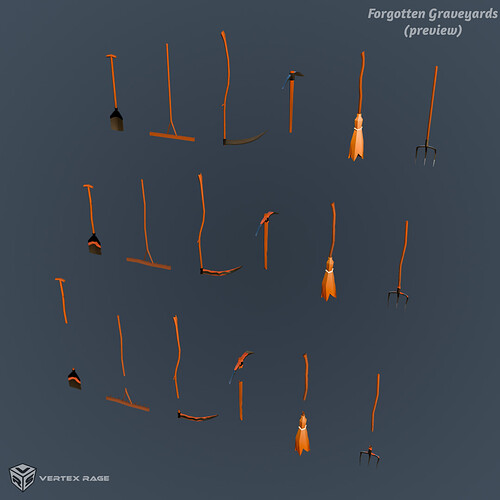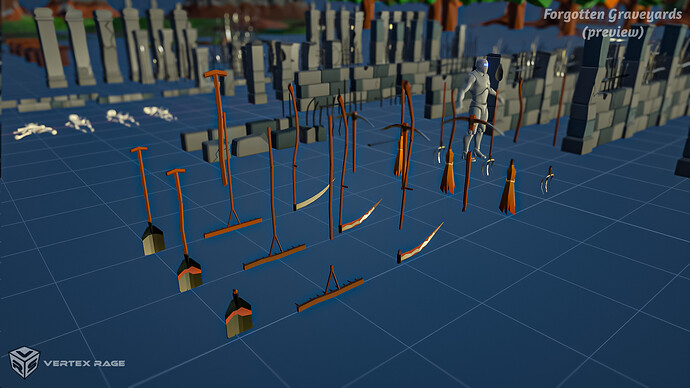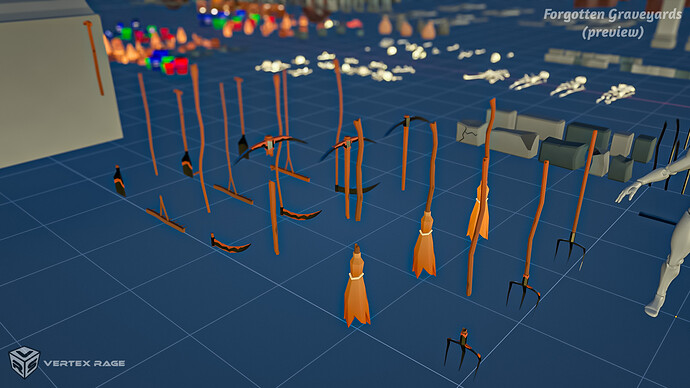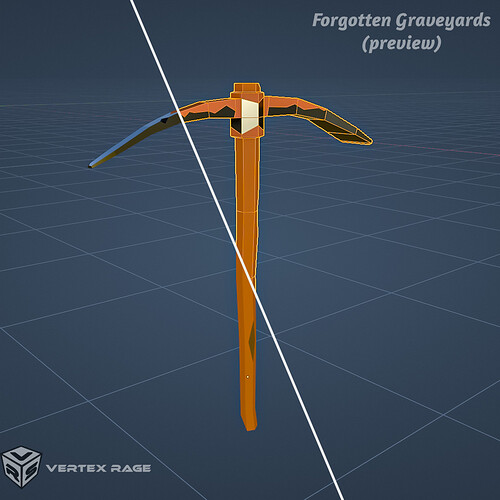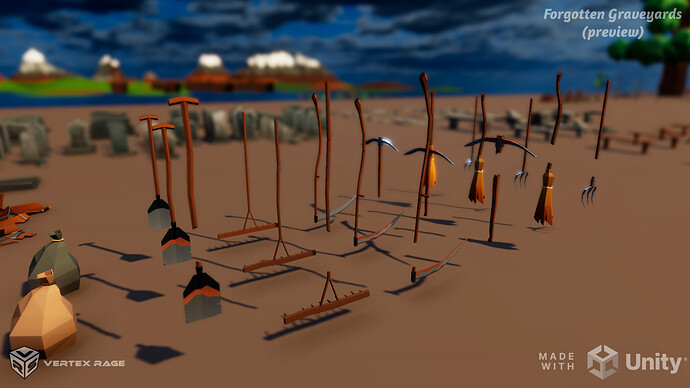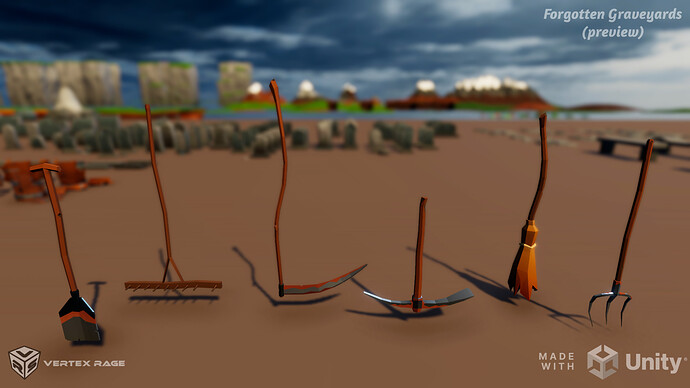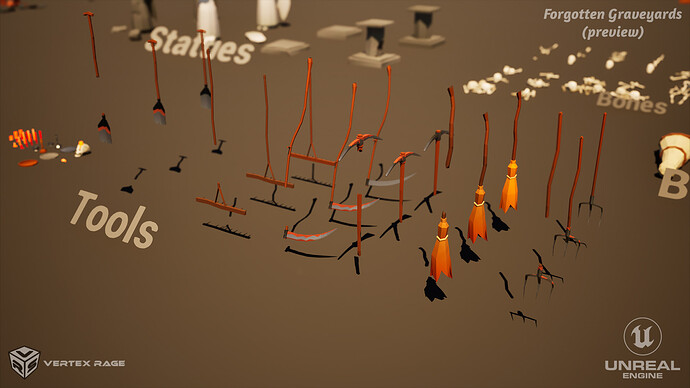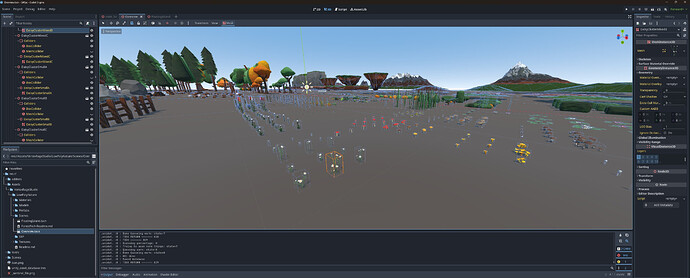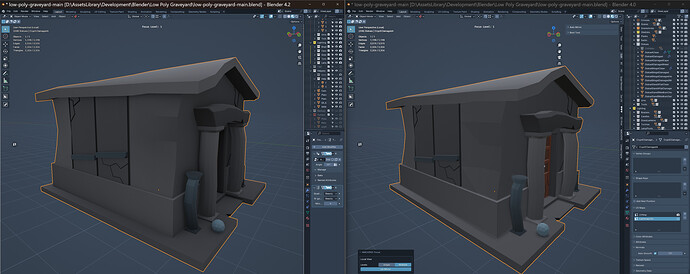And daytime lighting scenario:
Working on tools now, here is one WIP screen grab:
Seems there is a problem with displaying shorts, so here’s a link to it: https://www.youtube.com/shorts/bARL9_DxFz4
Another quick update - broom:
I’m seriously amazed how fast cycles with denoising works in Blender nowadays. Plus that shallow DoF in viewport is sweet 
Another micro update. I finally got around to updating my gumroad and now the free pack contains also Unreal Engine version of the pack: Low Poly Nature: Essentials
Ok, finally finished the tools. I stopped myself at half of what I planned though - will probably add a few of those (like wheelbarrow) in future update. Also experimenting with how to showcase them - not fully satisfied from that still. Here are all the tools - 6 types, clean, damaged and broken variants (24 models in total).
In Blender’s viewport:
Wireframe of one:
And made a little scene with all of them and some other models:
And last, but not least - in game engines:
Subsurface scattering looks good on low poly candles 
Working on lighting props… almost at the end of modelling… just a few categories left after that: statues, church and (optionally) few extra models for sidewalks/paths/roads… so close…
Aah, btw. here are some of those candles in blender (very old render from 2020 - did them for a small project that is basically an inspiration for the whole asset pack):
In the spirit of hype train of Brackeys being back and making Godot tutorials, I’m making limited time discount on Low Poly Nature. 80% OFF just for 1 day!
Link: https://vertexrage.gumroad.com/l/lowpolynature/BrackeysIsBack
It does work in Godot:
Edit: I should probably tell more about the ‘hype train’… See this:
Almost all lighting props done. Before I prepare proper update - a quick sneak peak of a lamp and brazier from inside Blender:
I’m not expert on HDRP lighting in Unity 3D, but I’m quite satisfied how the new low poly lamp posts look in HDRP:
Edit: Couldn’t help myself and had to check how they will look also in UE:
looking good 
Thanks!
Time for “proper” update. I added a few categories of ‘lighting related props’. Now aside from candles, there are grave lanterns, lamp posts, torches and braziers. Here are how they look in Blender’s viewport:
Candles and candle holders:
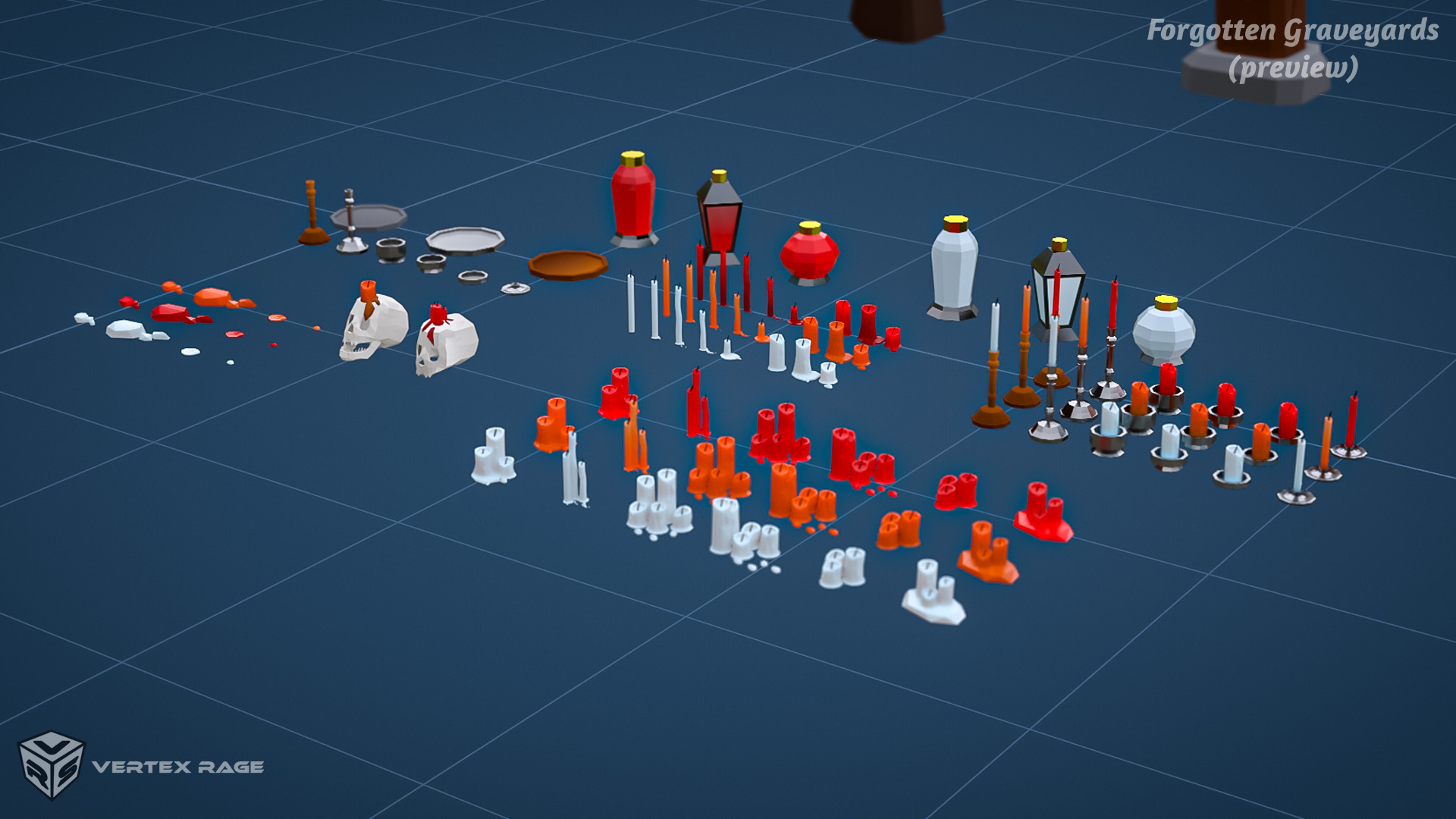
Torches:
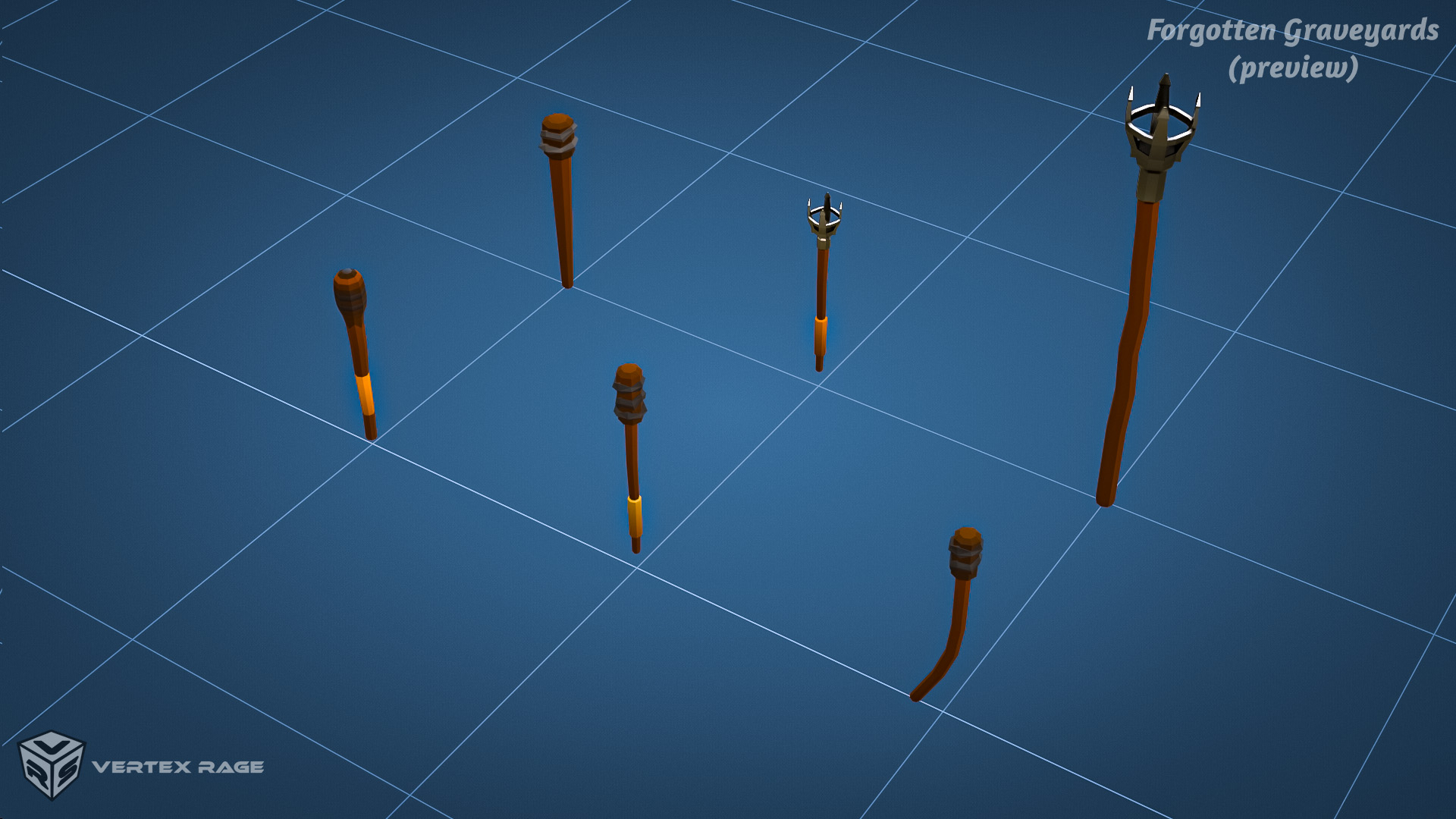
Braziers:
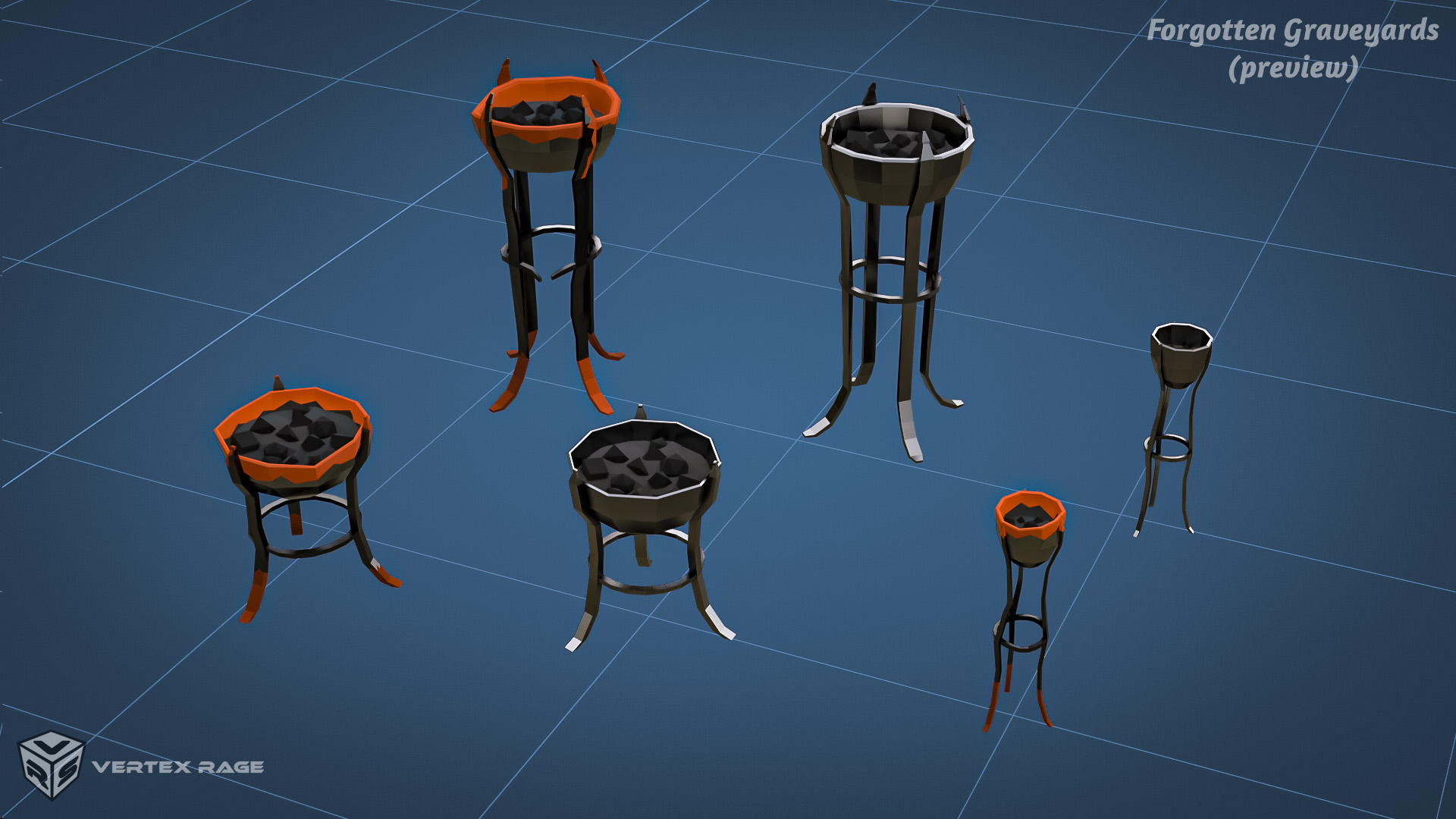
Lamps parts:
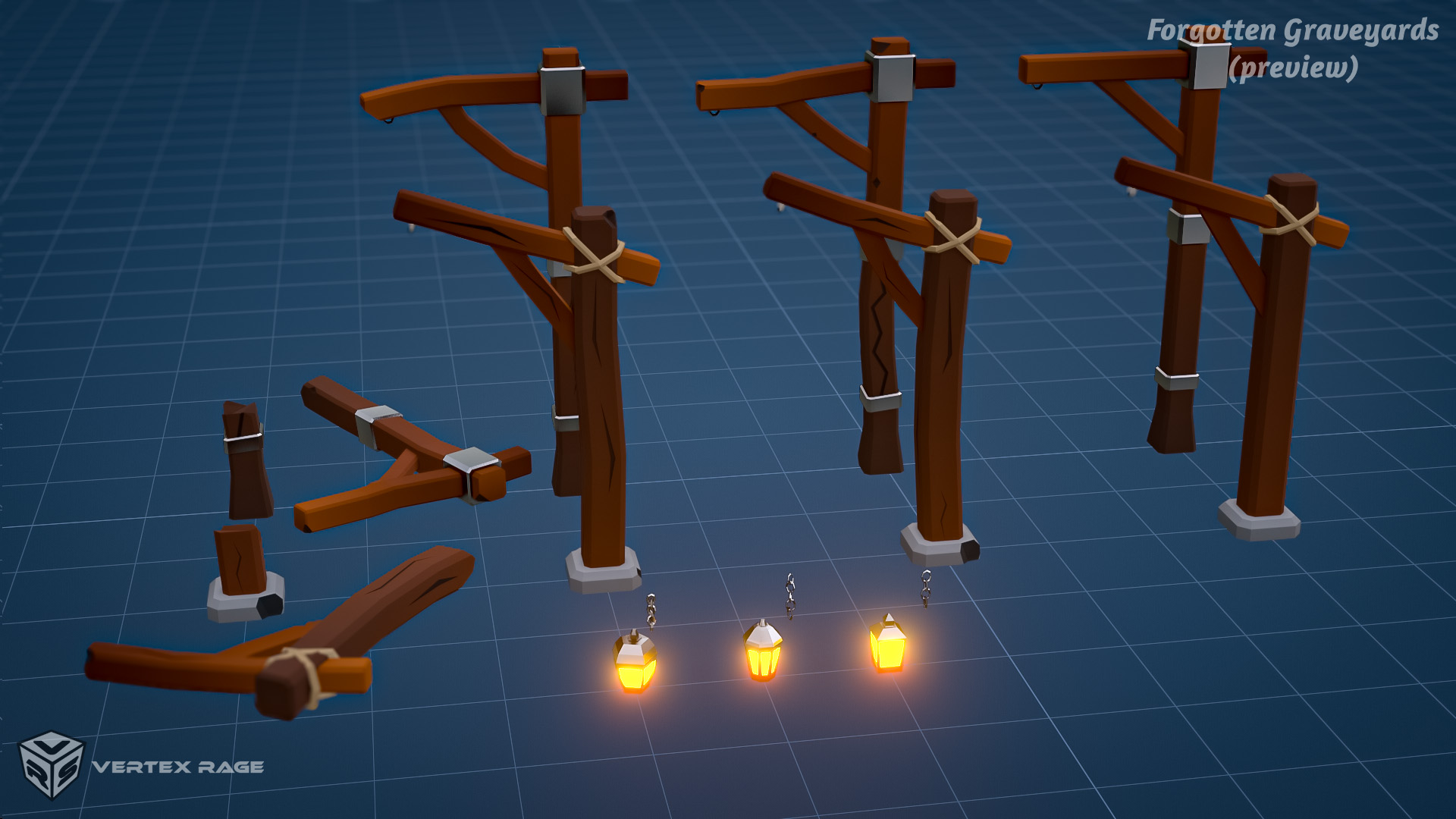
Do note that lamp posts are in principle modular. There are 2 bases (clean, two damaged variants and broken variant), 3 set of chains and 3 types of lamps. Aside from adding some color variations those parts can be used for creating quite a few variants. I made just 6 as examples.

One of the models for checking out wireframe:
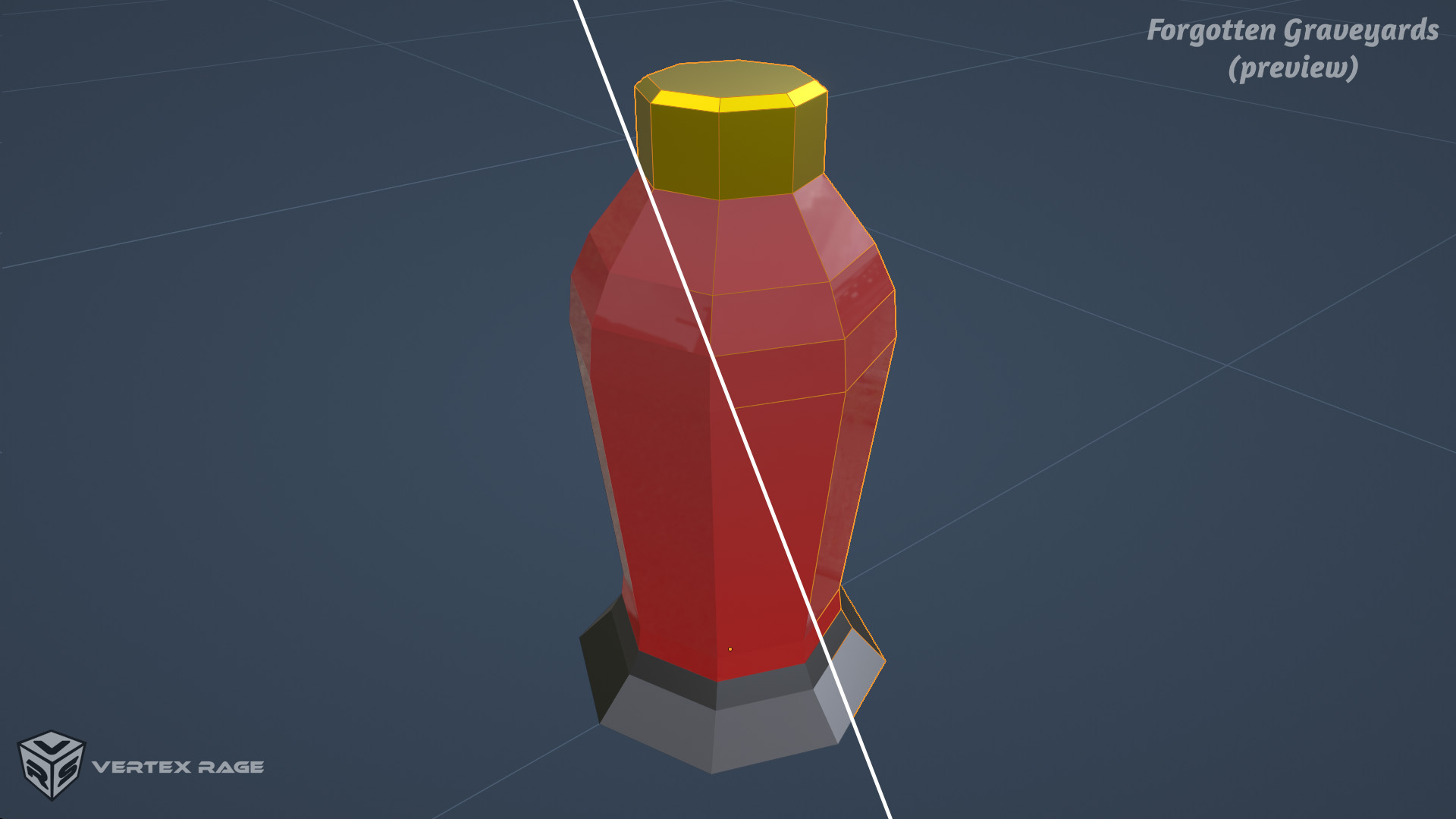
Models in Unity (URP)
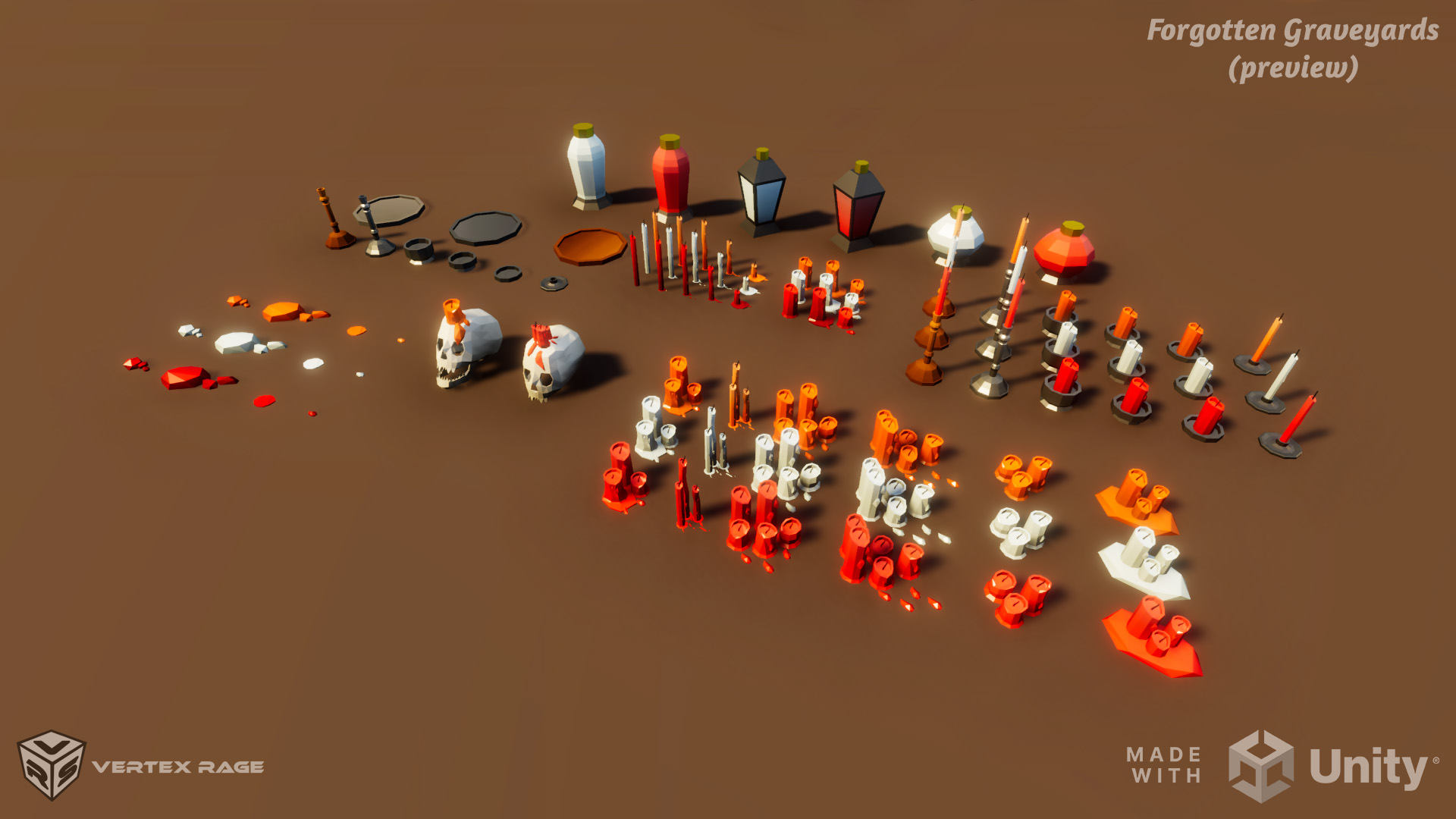
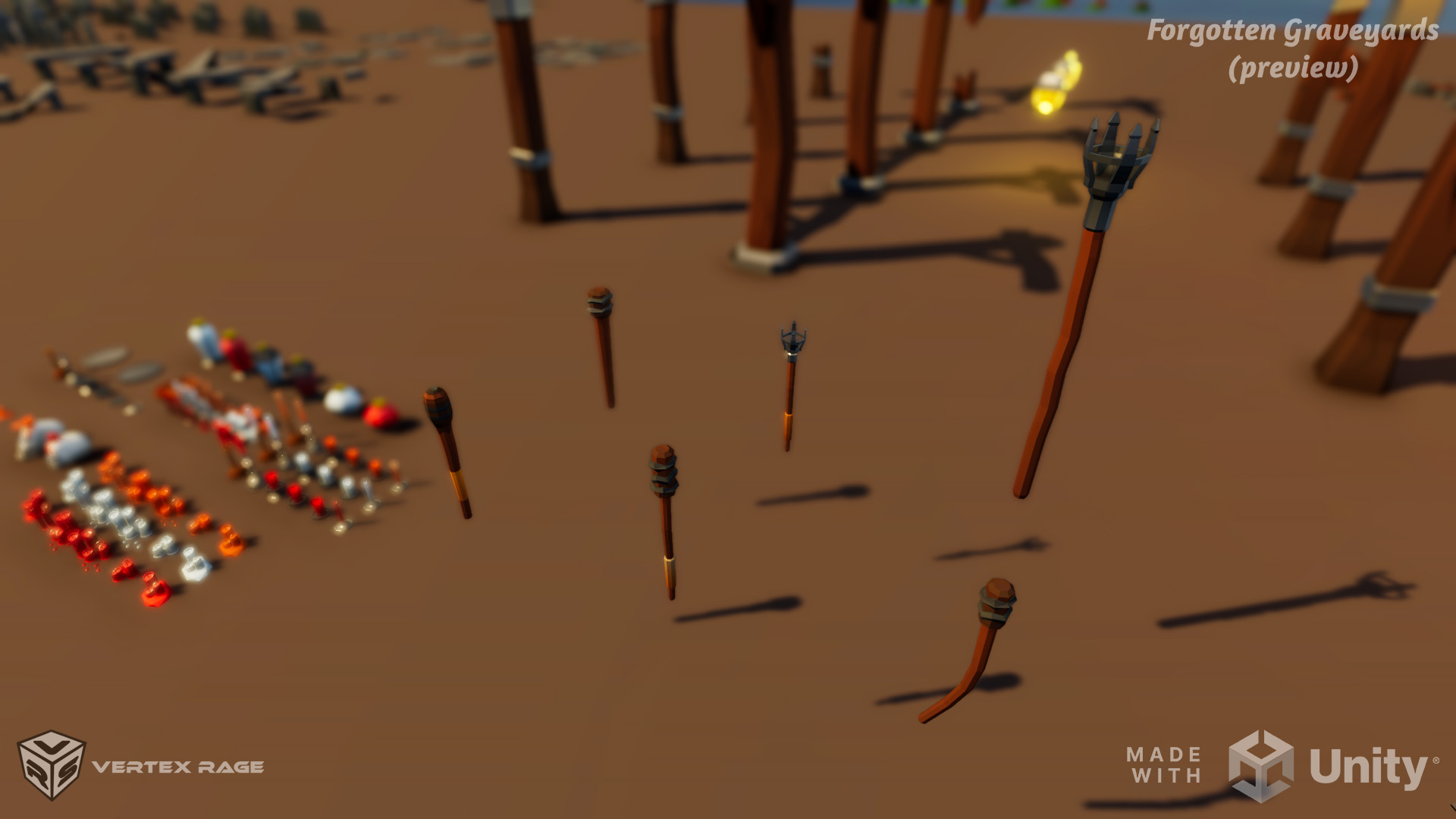
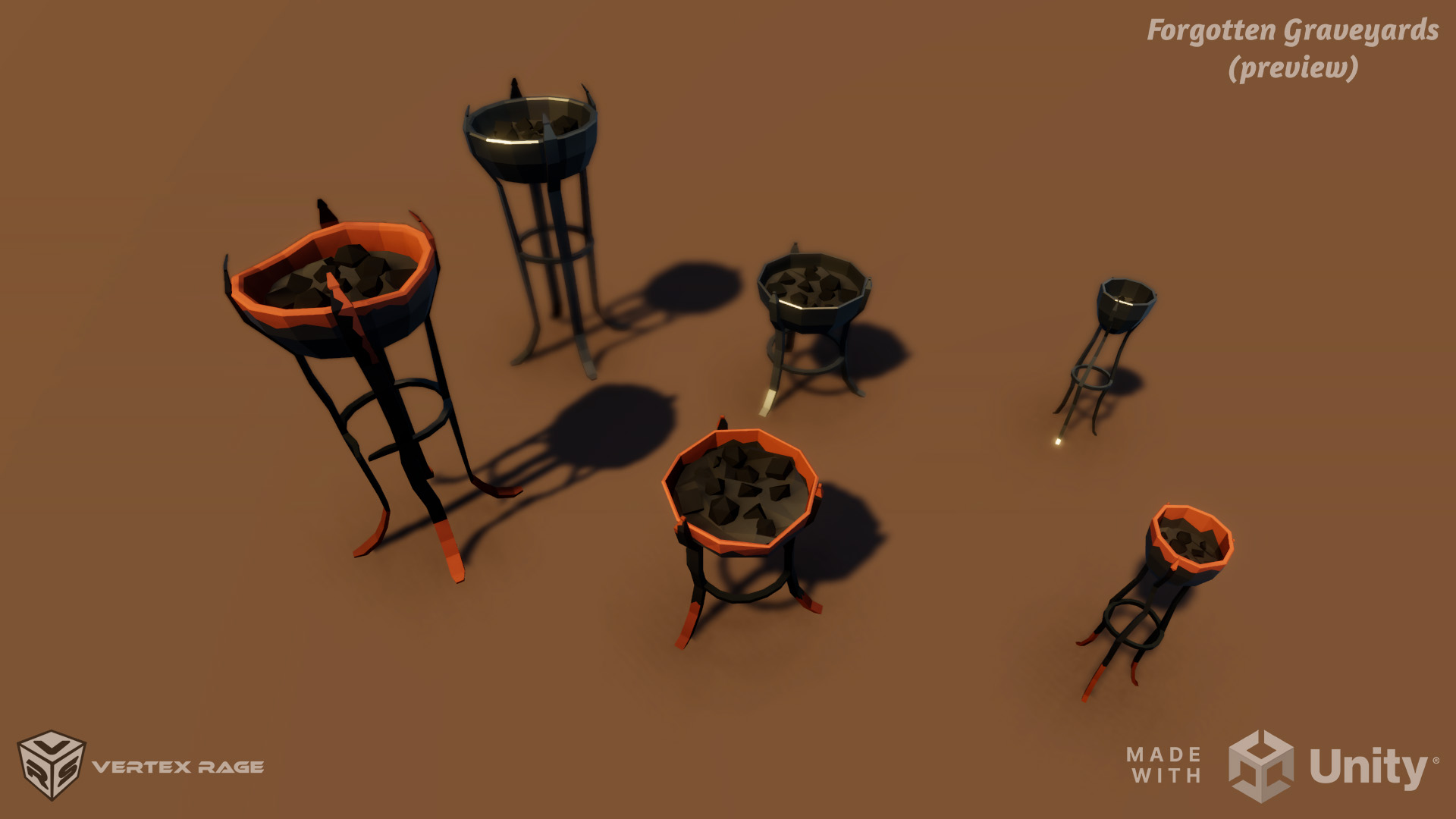
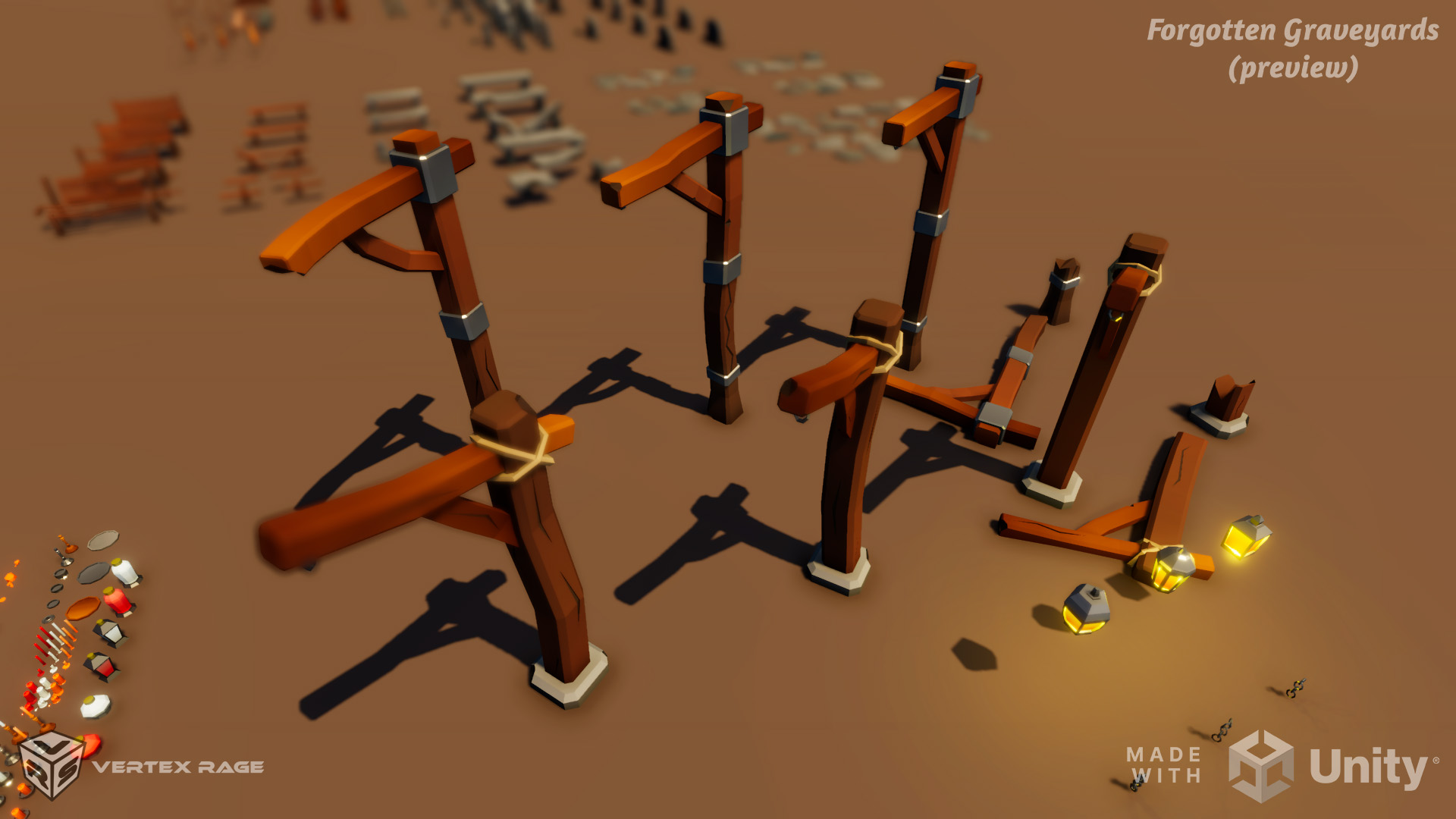

And in Unreal
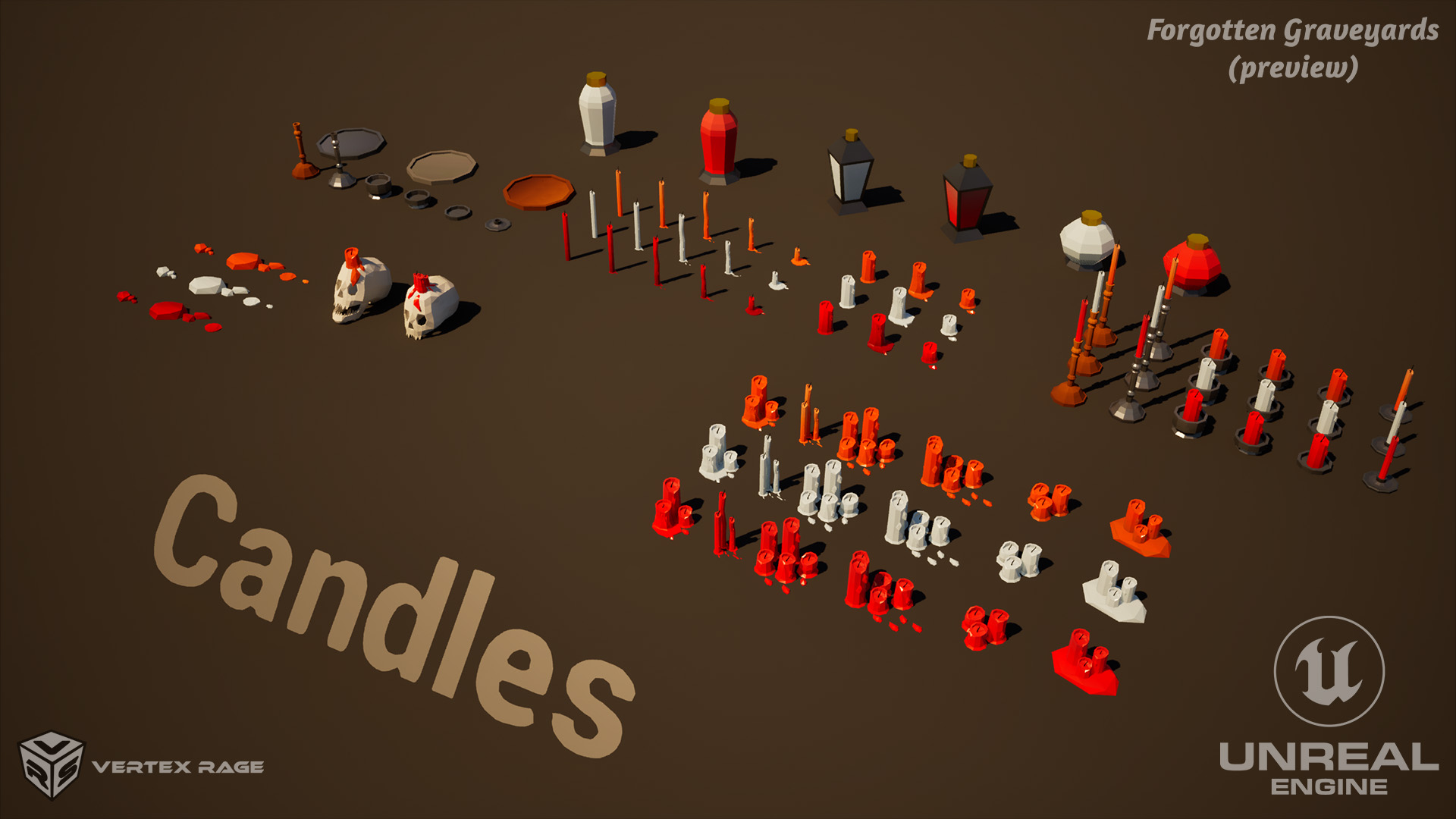

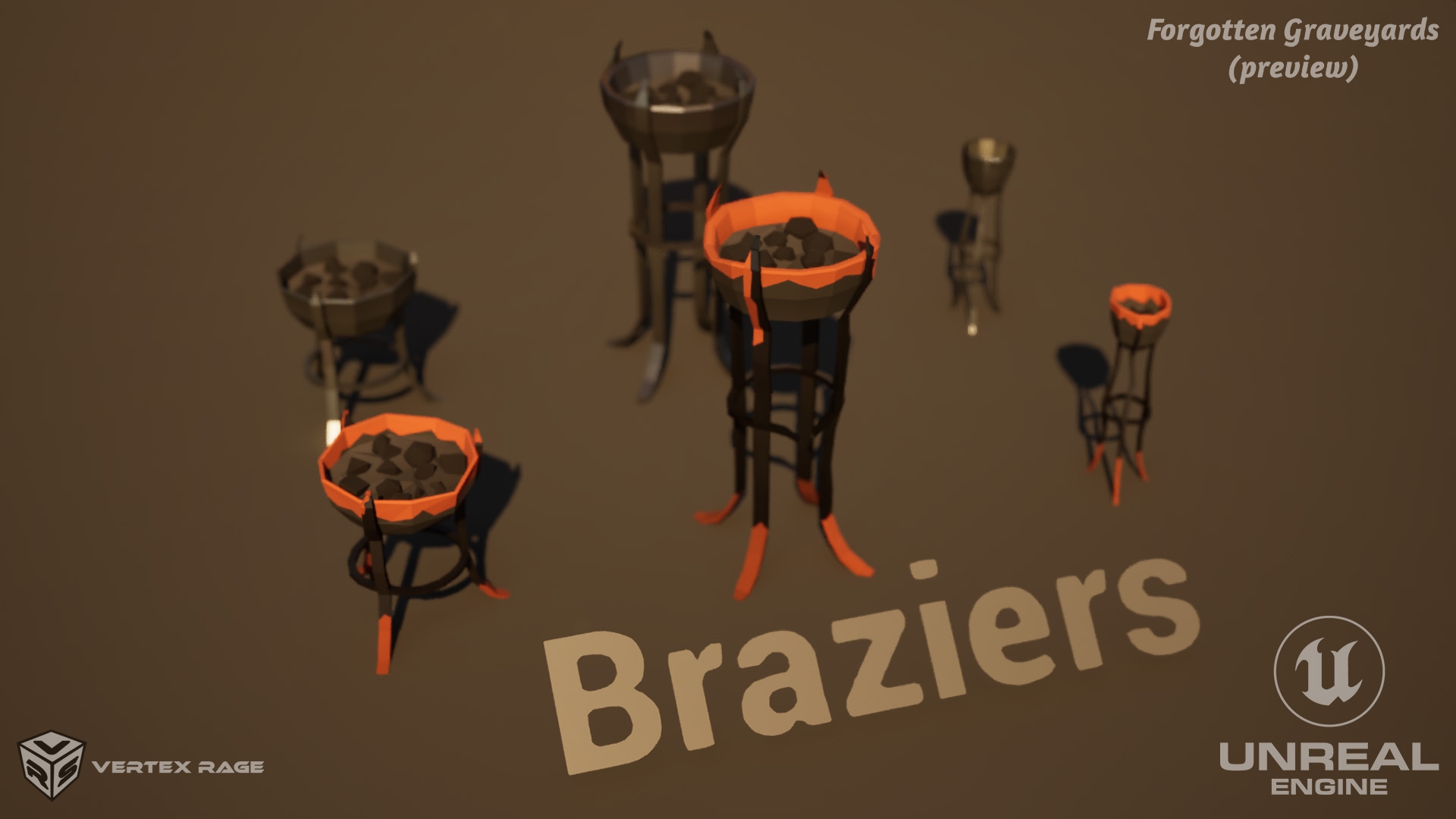
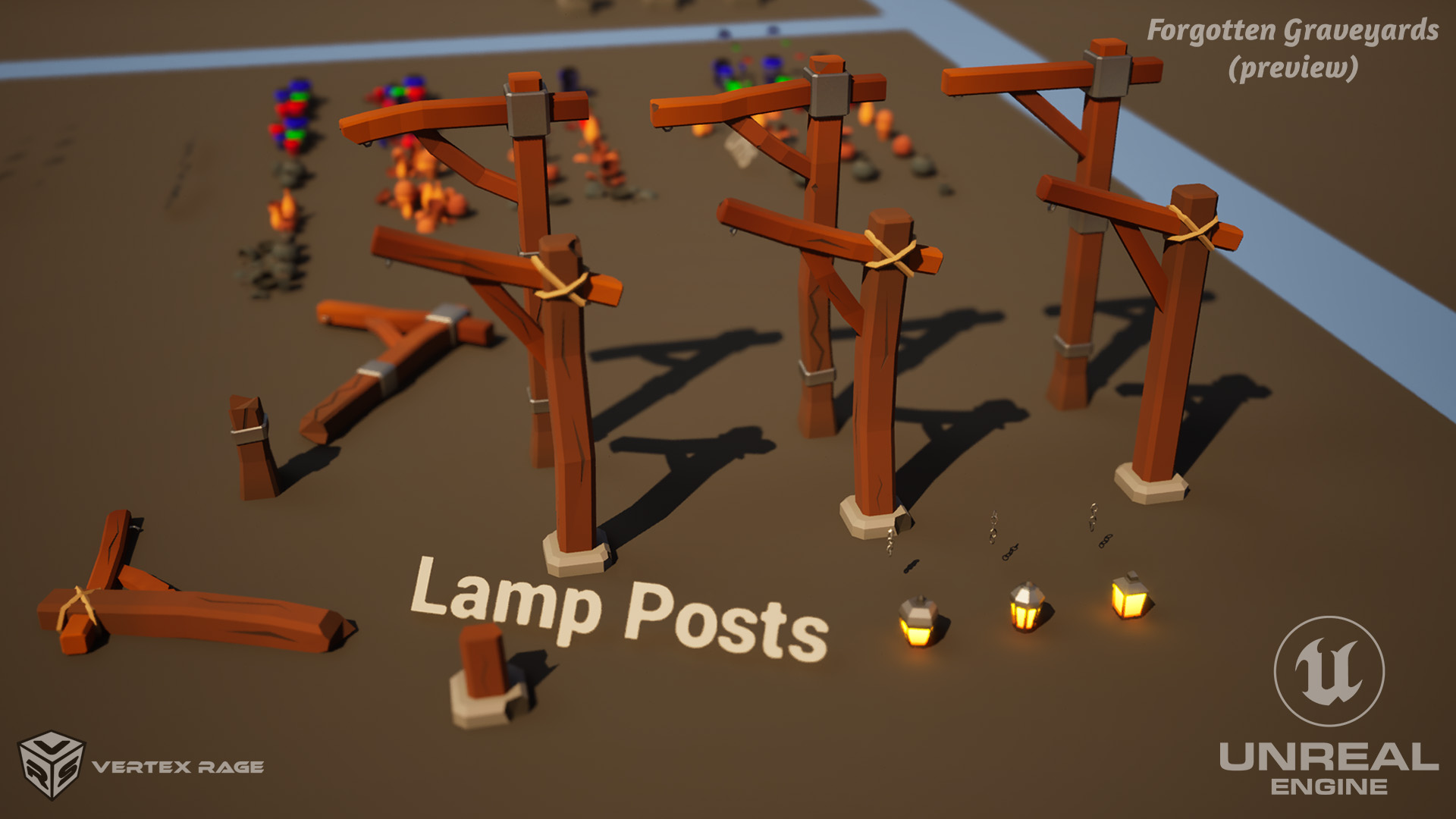
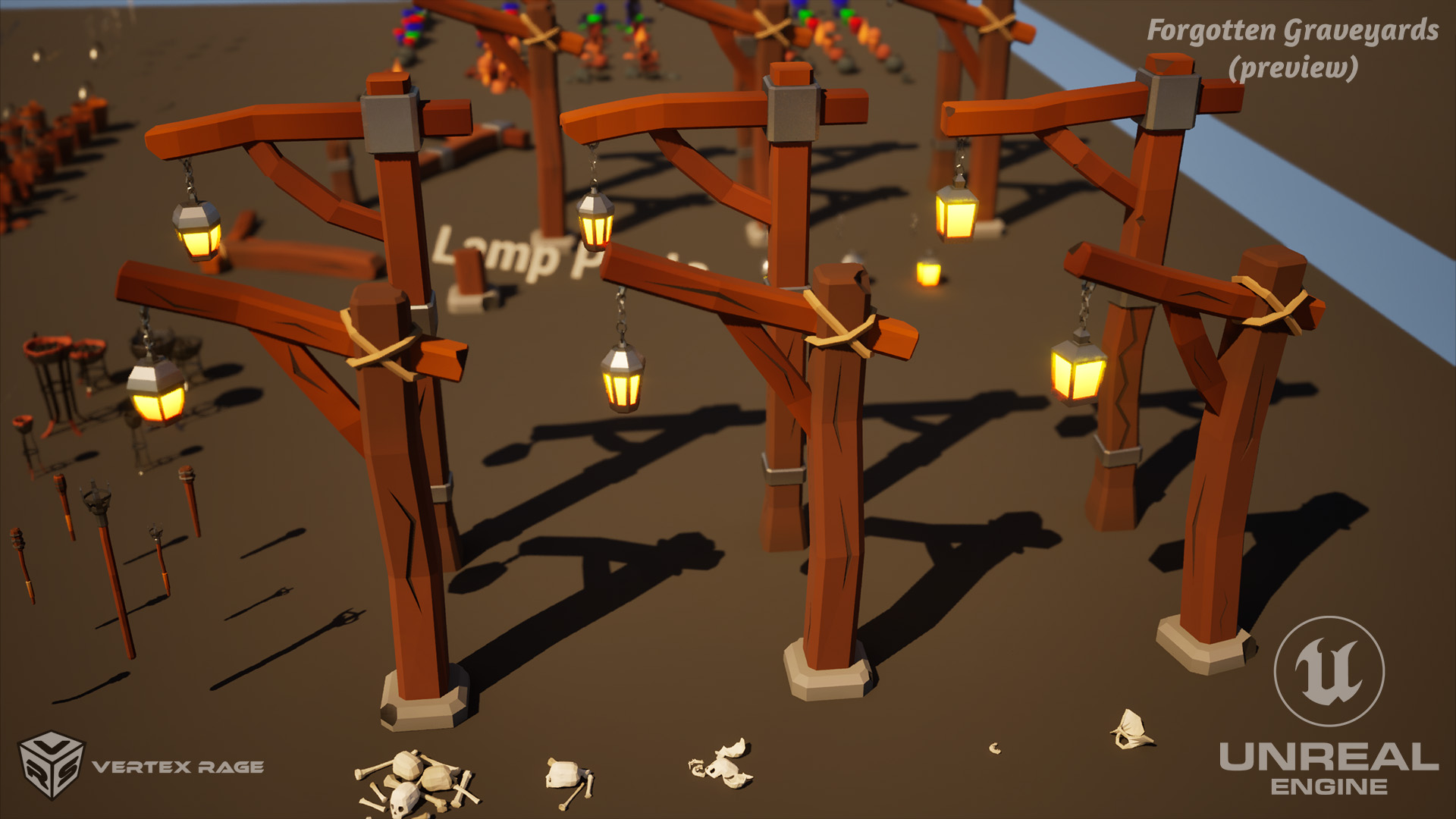
A few ‘showcase’ images (aside from the one below all posted already, but I’ll repost them here for completeness), starting with a new one from Unity/URP:

And that video showing lamp posts it in Unity/HDRP:
And last, but not least - UE5 map with lamp posts:
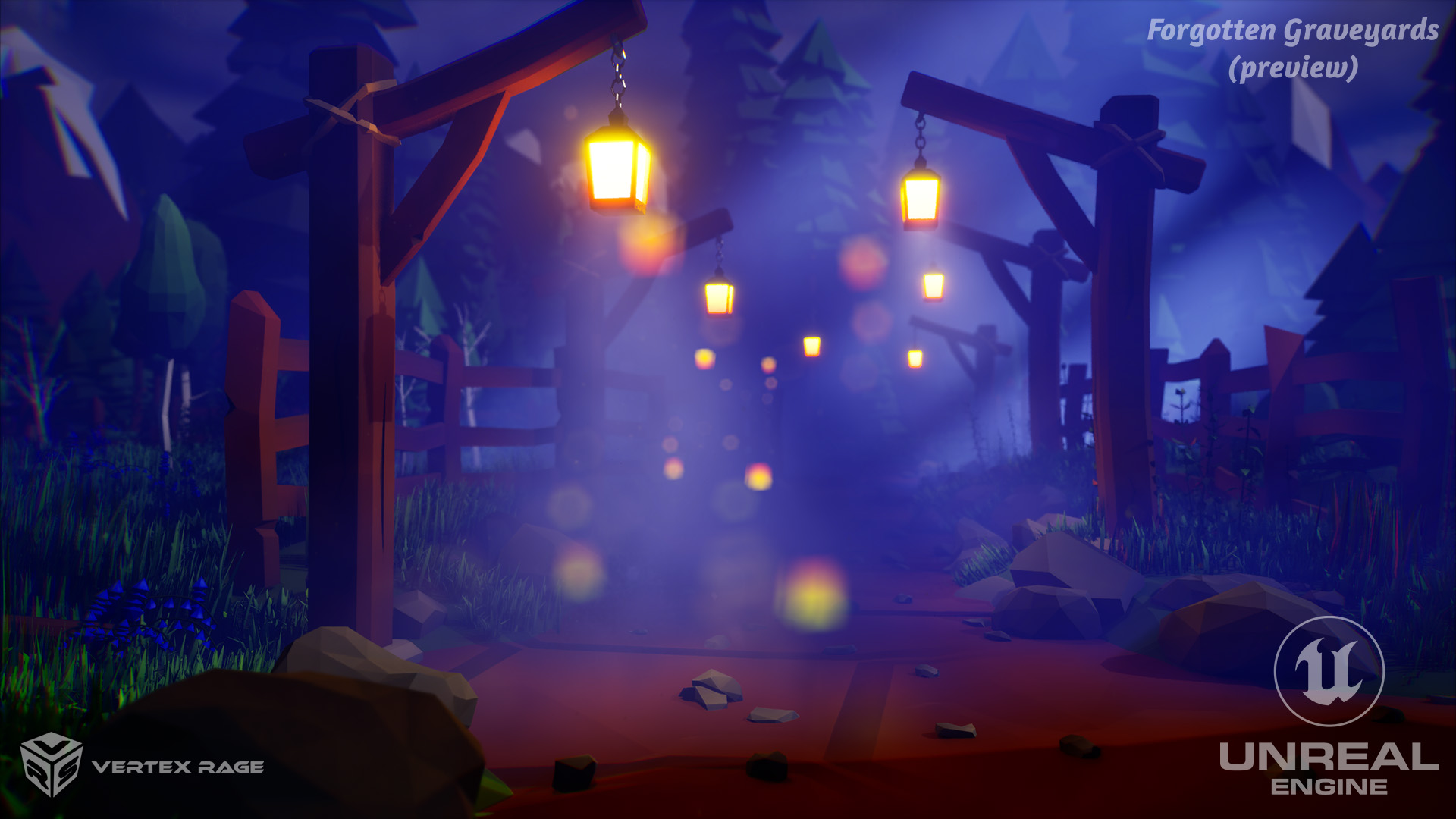
A little interjection by going back to Low Poly Nature pack… Just tested it in Unity 6. I’m seriously impressed by GPU Resident Drawer. I am not very trusting towards “1 click to solve your problems” solutions, so I didn’t expect much… but this one seems to be actually working. Just check for yourself:
Am a bit busy for last 2 weeks with other stuff, but one thing I want to share. I made a new ‘type’ of promo image for UE marketplace sale… How does it look to your eyes?
Gave 4.2 a try… seems that autosmooth behaviour is still not 1-1 transition as some people claim… Will have to stay for now on 4.0 as I’m not too fond on wasting a week on checking shading on 2k+ models…
But. Surely the exported files do not keep the Blender file smoothing? Or is/was it a universal of format thing?
As I saw, all the replaced autosmooth in 4.2 does is auto add the normals modifier. So not really a reversal to whatever it did or how it worked before. But the modifier is where the angle change is now so who knows? lol.
Yea, this is kind of “universal” thing.
The bad side of it is that I plan to support this asset pack for couple of years down the road so I will have to keep 4.0 around. Most likely possible to do (as even today 2.79 works, so one might expect 4.0 working in 7 years time too), but inconvenient…
Almost at the finish line with low poly Forgotten Graveyards asset pack for Unreal Engine. Around 2.2k models for this beast (including nature models). Wondering about compatibility. 5.1 is enough?
Also… I’m thinking of having releasing 2 packs out of it actually (one bundle, one props). So after that this low poly situation on Unreal Marketplace would be:
- Low Poly Nature pack - environment category (808 models), already releleaed
- Low Poly Graveyards + Nature - environment category (2.2k models), including all the models, new demo map(s)
- Low Poly Graveyards - props category (~1.4k models), just overview map and models
What do you think about that?
Edit: I plan to add a few models as update (e.g., statues, church etc.), but for now I think it’s already more than enough for the pack.




